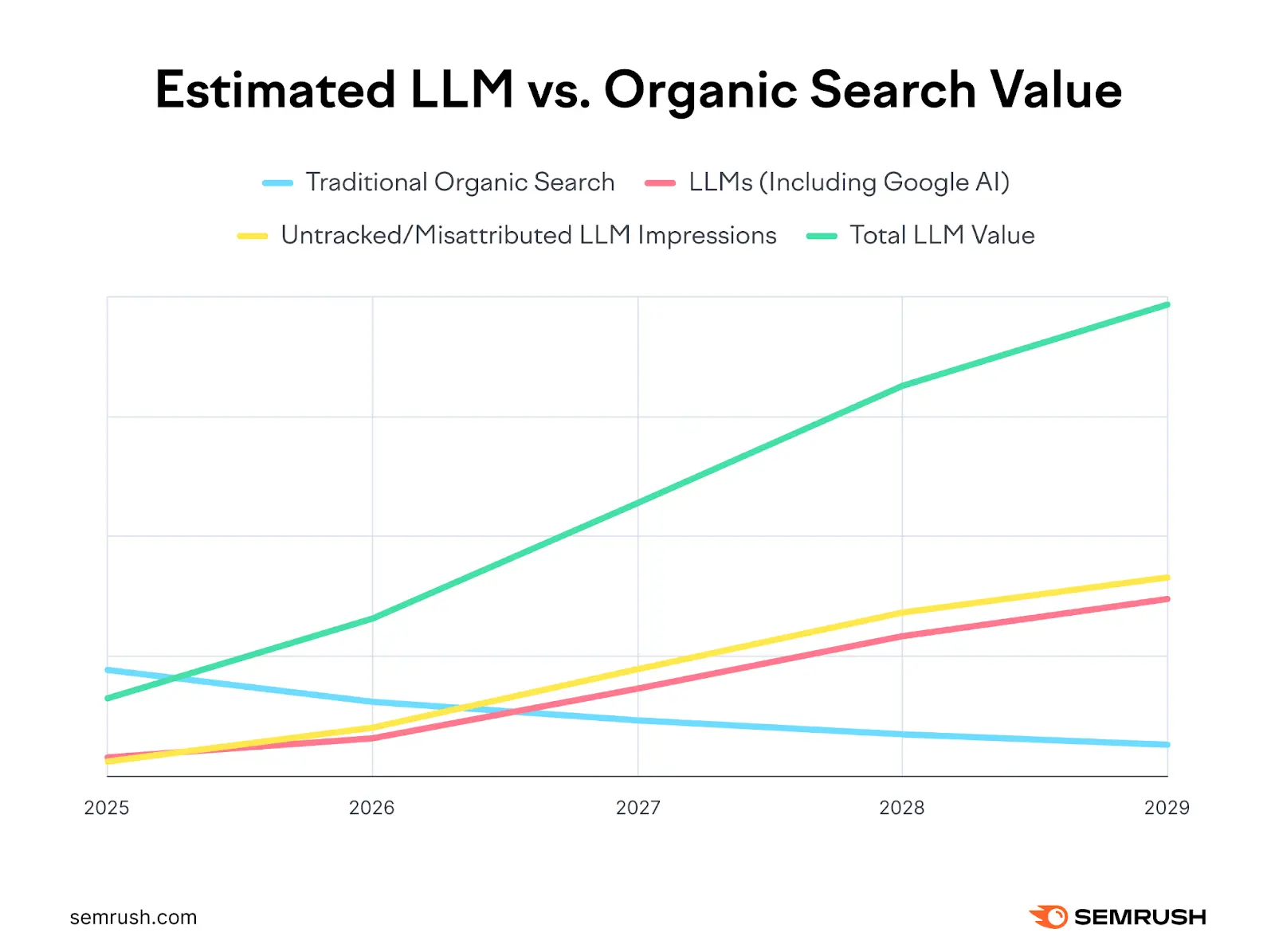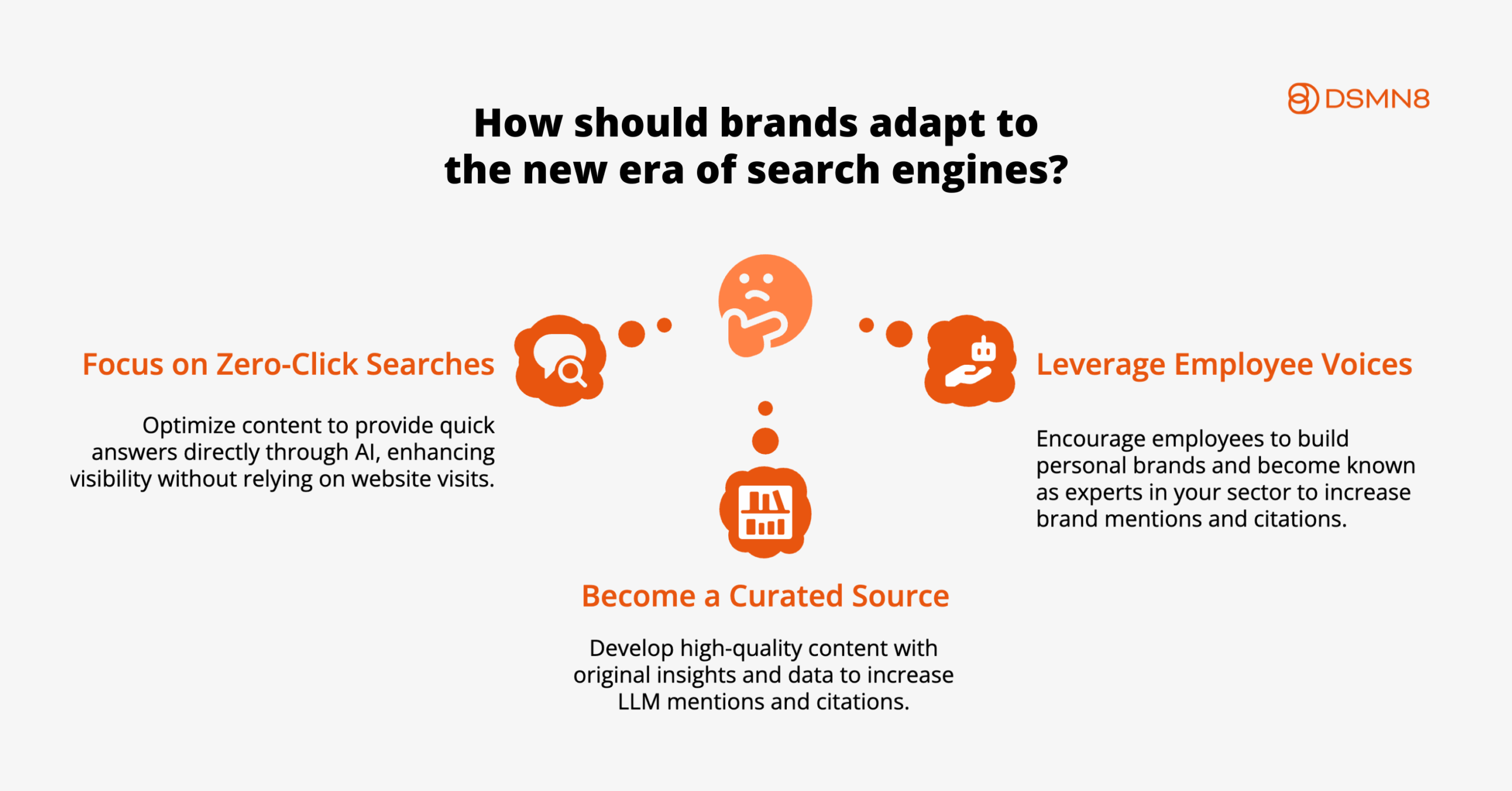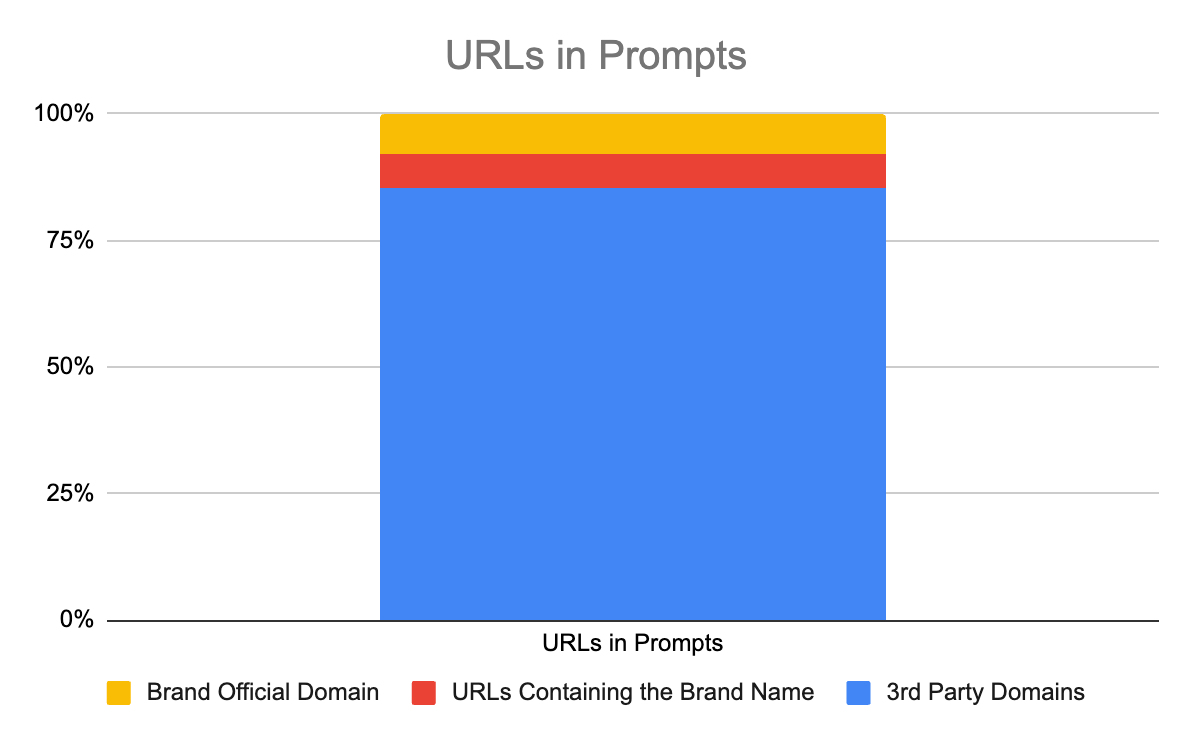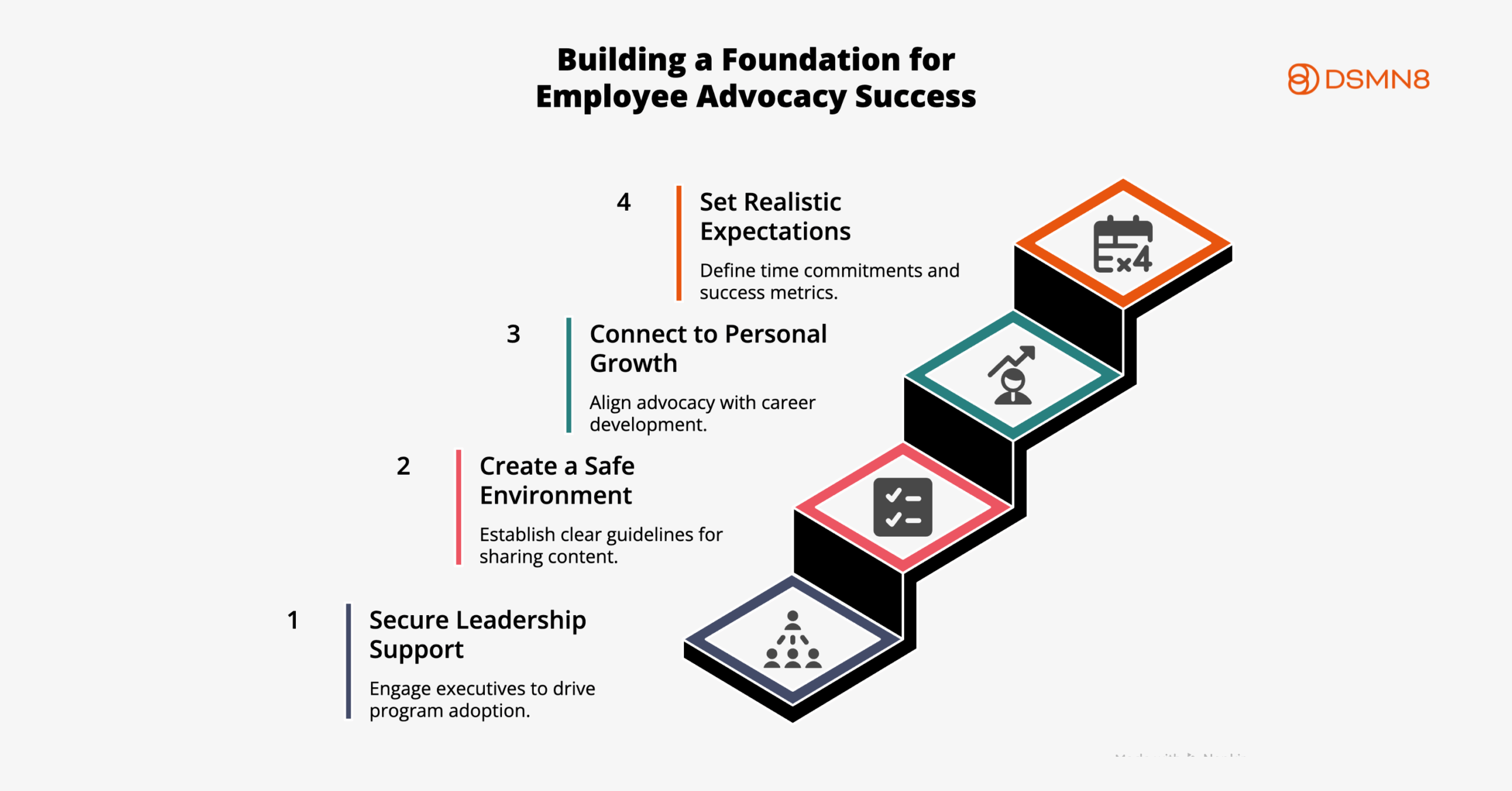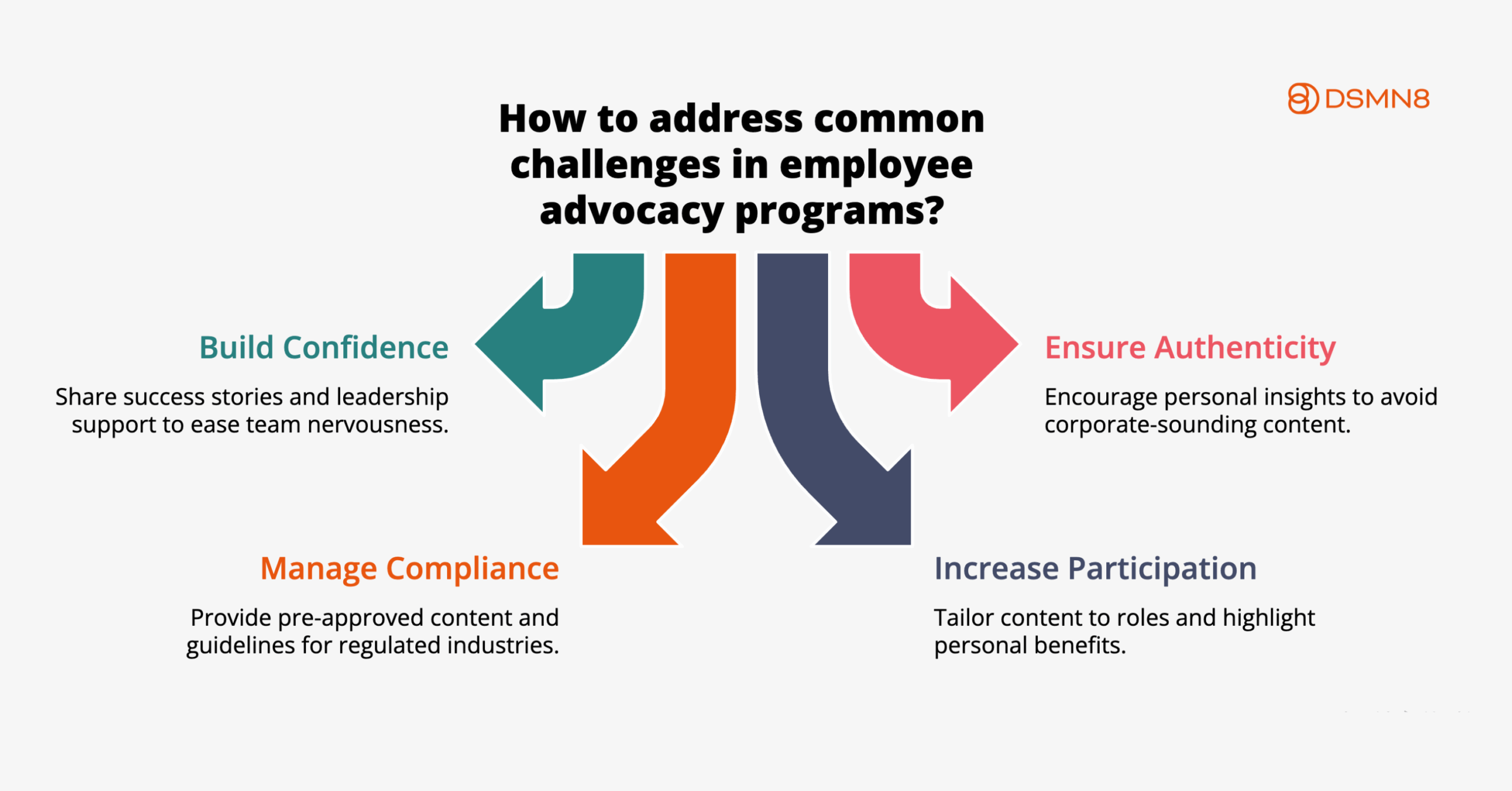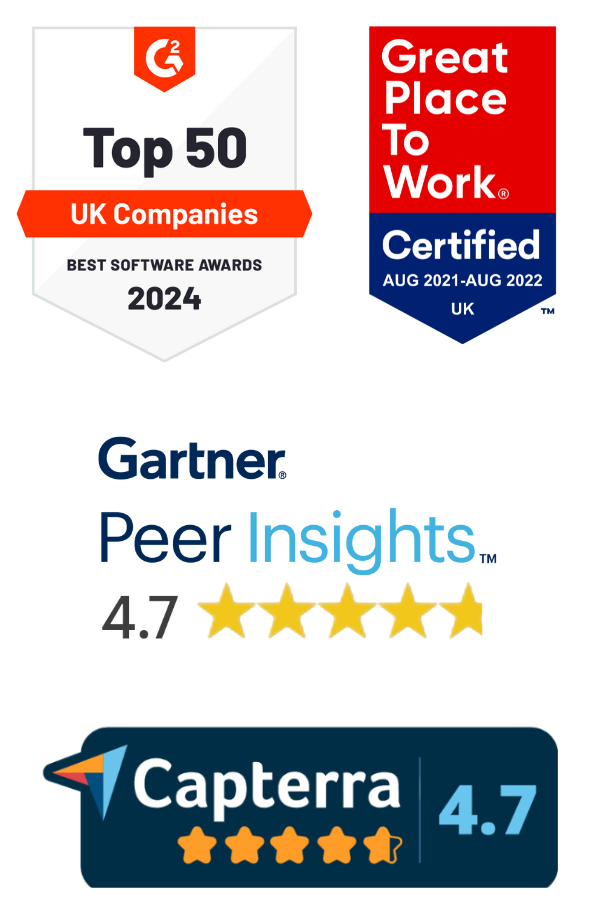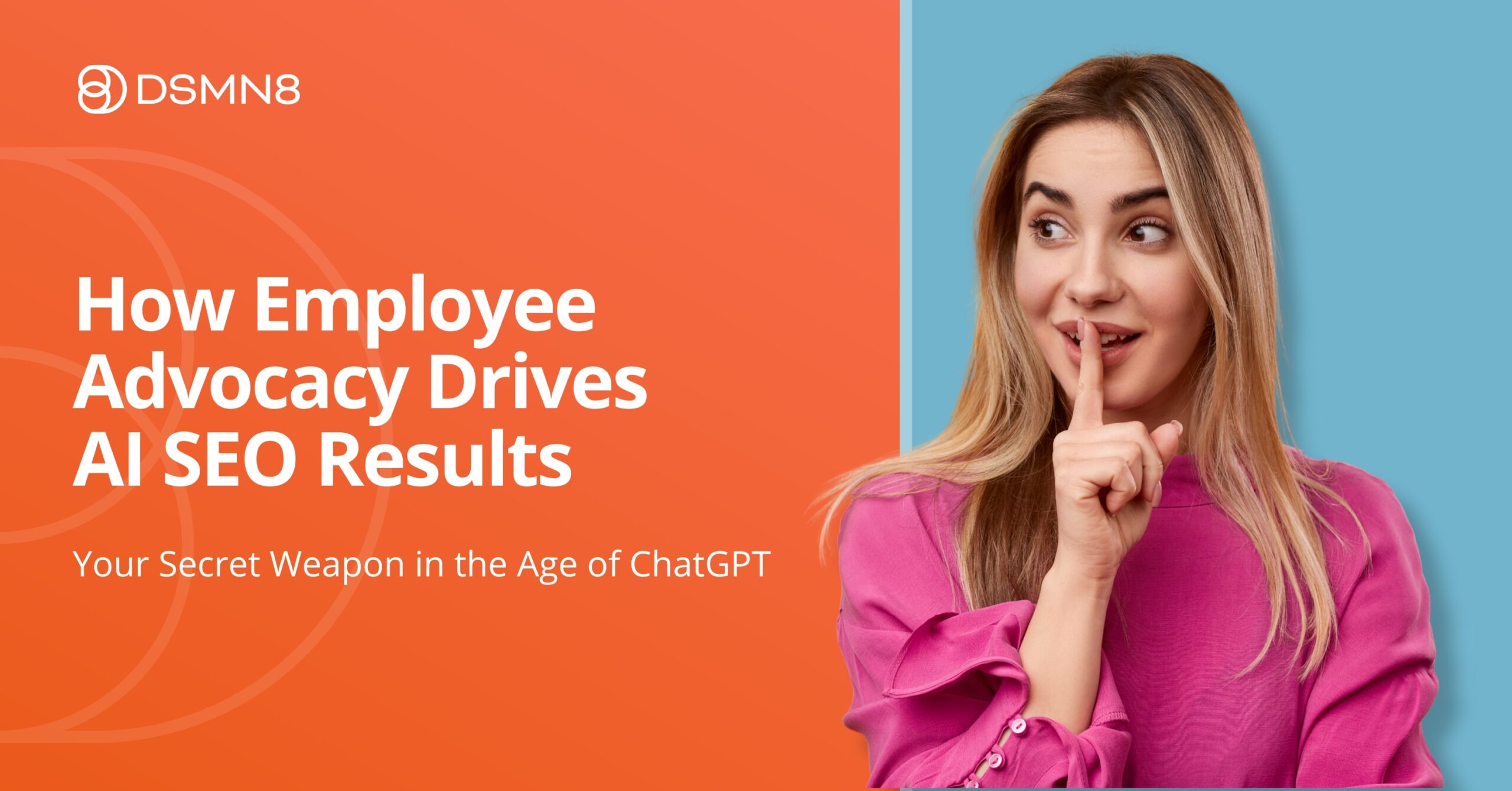
What's on this page:
- The New Era of Search Engines: What’s Really Changing.
- Traditional SEO vs AI SEO: Building on What Works.
- Why Employee Advocacy Works So Well for AI SEO.
- Real Results: How Employee Advocacy Drives Visibility.
- Your Step-by-Step Implementation Guide.
- Common Challenges and Practical Solutions.
- The Competitive Advantage of Early Action.
- Looking Ahead: Employee Advocacy Is the Future of Search Visibility.
- Frequently Asked Questions.
- Additional Resources
Something big is happening in search, and it’s changing how people find information about your brand.
Your customers aren’t just using Google anymore.
They’re asking LLMs (Large Language Models) like ChatGPT, Perplexity, and Claude for answers.
And if your brand isn’t part of those AI-generated responses, you’re missing out on valuable opportunities to connect with potential customers.
This shift is happening faster than most people realize.
By 2027, Semrush predicts that AI search traffic is projected to overtake traditional search entirely. But what makes this shift even more impactful is that AI search visitors convert at 4.4x the rate of regular organic search visitors.
Let’s explore how to adapt your approach without reinventing the wheel, and how your employees can support your GEO (Generative Engine Optimization) strategy.
The New Era of Search Engines: What's Really Changing
What’s happening with search behavior right now:
As traffic from AI tools like ChatGPT rises and classic search traffic declines, the value generated by AI-driven visits is expected to match and eventually surpass traditional search by 2027 according to Semrush’s study (pictured above).
This creates a new opportunity: being the trusted source that AI engines turn to when people ask questions in your industry. It can also be a game-changer for emerging brands that lack a huge library of content, a wealth of backlinks, or an aged domain.
Traditional SEO vs AI SEO: Building on What Works
Here’s the good news: your existing SEO knowledge isn’t obsolete.
Many traditional SEO best practices actually work great for AI SEO, too. Quality content and technical optimization are still essential pillars.
The difference is what AI engines prioritize when deciding which sources to cite and recommend.
Let’s break it down 👇
| Factor | Traditional SEO | Generative Engine Optimization (GEO) |
| Main Goal | Rank in “blue links” | Be cited or summarized by AI |
| Measurement | Click-throughs, rankings | AI citations, mentions, brand visibility |
| Content Focus | Keywords, backlinks, content quality | Authority, experience, unique insights |
| Adaptation | Reactive to updates | Proactive, real-time, answer-driven |
The foundation remains similar. You’re building on proven SEO principles while adapting for how AI engines discover, evaluate, and recommend content.
I like to think of AI SEO (or GEO) as SEO 2.0 rather than a complete replacement.
Why Employee Advocacy Works So Well for AI SEO
AI engines have a particular appetite for authentic, experience-based content.
They’re looking for what Google calls E-E-A-T: Experience, Expertise, Authoritativeness, and Trustworthiness. (See what I mean about traditional SEO not being obsolete!)
That’s where your team comes in.
Your employees naturally provide all four of these elements when they share their professional insights and experiences. And AI engines notice these signals.
Besides, in a world filled with automated and generic content, people crave real stories and genuine expertise.
3 key reasons employee advocacy helps with your optimization for LLMs:
Research from Search Engine Land (pictured above) revealed that only 9% of LLM outputs directly link to a brand’s website.
LLM links act as citations: if your site is linked, you can drive traffic, build authority, and shape your brand narrative.
But if only third-party articles get cited, your brand loses both visibility and traffic.
To increase the chances of your website being cited by AI tools, brands need to be seen as trustworthy sources. When employees share expert content and thought leadership, it boosts your brand’s credibility and mentions across the internet, increasing the likelihood that LLMs will cite you.
Our 2025 employee advocacy benchmark report revealed that 61% of organizations now consider employee advocacy “extremely important” for brand growth and trust. That number keeps growing as more companies see the results.
Real Results: How Employee Advocacy Drives Visibility
General Motors’ Sharefluence program put content sharing in employees’ hands.
They reached 20 million people in six months.
More importantly, those employee posts created authentic, experience-rich content that highlights GM’s automotive innovation and company culture.
The content multiplier effect is powerful. When employees share their day-to-day insights, project wins, and industry observations, they create original content that provides real value. This “information gain” is exactly what language models look for when deciding which sources to recommend.
💡 Top tip: Cross-platform reach matters. Keep in mind that AI models don’t just analyze traditional websites! They’re also learning from LinkedIn posts, Reddit discussions, YouTube, forums, and comparison platforms like Tekpon.
Your Step-by-Step Implementation Guide
Ready to build an employee advocacy program that boosts your AI SEO? Here’s a practical approach that works:
Step 1: Build the Right Foundation
Success starts with a positive company culture and clear communication about program goals.
Step 2: Make Participation Easy and Valuable
The biggest obstacle to employee advocacy is usually friction. Your goal should be to remove as many barriers as possible.
👉 Build a content library. Provide employees with regularly updated, brand-safe content they can share or customize. Include multiple versions of the same message so posts feel personal rather than duplicated.
👉 Enable personalization. The most successful programs let employees add their own insights, experiences, and perspectives to shared content. Personal stories and professional observations get much better engagement than generic announcements.
👉 Provide helpful training. Not everyone knows how to create engaging professional social media content. A few training sessions can dramatically improve both participation rates and content quality. Grab our training plan to get started.
👉 Share examples: Instead of sharing “Company X announces new product Y,” encourage posts like “Just spent time with our new product launch. Here’s what caught my attention as someone who’s worked in this industry for several years…”
Step 3: Use Technology to Scale Without Losing Authenticity
The right tools make advocacy manageable for busy employees while maintaining genuine voices.
1. Segment content appropriately. Sales team content should differ from engineering content. It’s essential to serve relevant content to the right people based on their roles and interests.
2. Offer smart scheduling options. Automation with smart scheduling helps even the busiest employees stay active.
3. Implement competitive leaderboards & gamification. Leaderboards and internal shoutouts keep people engaged, making advocacy sticky.
3. Make it easy to customize content. DSMN8’s Dynamic Display and AI Content Assistant tools help you and your employees generate multiple versions of the same post, while ensuring that images are varied. This prevents the robotic feel of mass-shared identical content.
💡 Check out our full guide to choosing the right employee advocacy platform for your organization’s needs, and grab the RFP template to help you in this process. Lewis shares how to approach the RFP process in the video below:
Step 4: Measure Both Traditional and AI SEO Results
Monitoring success for an employee advocacy program goes beyond tracking the number of employee posts.
Ensure you’re monitoring metrics from these four categories to get an overall perspective on program performance:
📊 Start with a free employee advocacy health check. Find out how active your team is compared to your competition, and gain insights on how to improve this.
Common Challenges and Practical Solutions
Every employee advocacy program encounters similar obstacles. Here’s how to address them:
💬 “Our team feels nervous about posting professionally”
Start with those who are already comfortable on social media and your senior leadership team. Share success stories and positive feedback to build confidence. Most hesitation disappears once people see good results and know that the C-Suite supports the program.
💬 “Content sounds too corporate or scripted”
Give employees freedom to use their own voice and add personal insights. Authentic posts that aren’t perfectly on-brand often perform better than polished content that sounds like it was written by a company.
💬 “We work in a heavily regulated industry”
Create comprehensive pre-approved content and clear guidelines. Companies in sectors like finance and pharmaceuticals have successfully scaled advocacy programs with DSMN8 by balancing compliance with authenticity and company culture content.
💬 “Participation rates are lower than expected”
Make sure content is relevant to each person’s role and audience. A marketing executive and a senior leader need very different types of content to share effectively with their networks. Ensure employees understand how advocacy benefits their career and personal brand.
The Competitive Advantage of Early Action
Companies that build strong employee advocacy programs now are positioning themselves to dominate as AI search becomes more prevalent.
When AI engines decide which sources to trust and recommend, you want your brand already embedded in that process. Getting there early establishes thought leadership that competitors will struggle to challenge.
Competitors can copy your marketing tactics, but they can’t clone your team’s unique experiences and perspectives. Every story your employees share creates a competitive moat that deepens over time 💪
And don’t forget that the benefits extend beyond marketing: today’s job seekers research companies through employee social media posts and gather insights from LLMs. When your colleagues shares their experiences, you’re attracting talent who already connect with your culture.
Looking Ahead: Employee Advocacy Is the Future of Search Visibility
Search is becoming less about rankings and backlinks, and more about being found and recommended by AI.
As LLMs do more of the heavy lifting for buyers in the research stage, your best way to stand out is by tapping into your greatest asset: your people.
When employees share what they know and care about, they help your brand become the go-to source for both customers and AI. Over time, this builds a strong foundation for lasting digital visibility.
Employee advocacy isn’t an add-on; it’s a core pillar of AI SEO.
The future of search belongs to brands that empower their people. Make sure your brand is one of them.
Ready to scale your visibility with employee advocacy?
Frequently Asked Questions About Employee Advocacy for AI SEO
How quickly can we expect to see results from employee advocacy for AI SEO?
Social reach and engagement improvements typically appear within the first month. AI SEO visibility improvements usually develop over 3-6 months as search engines index the increased content volume and recognize authenticity signals from your employee advocates.
What if employees share content that's off-brand or inappropriate?
Clear guidelines and pre-approved content libraries minimize this risk significantly. Most successful programs operate on trust with appropriate guardrails rather than restrictive control. The benefits of authentic employee voices far outweigh minimal risks when programs are managed thoughtfully.
How much time does employee advocacy require from team members?
The most successful advocates typically spend 10-15 minutes per week sharing and personalizing content. Automation tools can reduce this time commitment while maintaining authenticity that benefits AI SEO efforts.
Can employee advocacy work effectively in B2B industries?
Absolutely. B2B employee advocacy often performs better than B2C programs because professional networks are highly engaged with industry insights and expertise-driven content that AI engines value for SEO purposes.
How do we measure ROI on employee advocacy programs for AI SEO?
Track a combination of reach metrics (impressions, engagement), traffic metrics (website visits, lead generation), AI SEO visibility metrics (brand mentions in AI responses), and business outcomes (hiring quality, sales pipeline influence).
Additional Resources
More resources you’ll find helpful in your employee advocacy journey:
Emily Neal
SEO and Content Specialist at DSMN8. Emily has 10 years experience blogging, and is a pro at Pinterest Marketing, reaching 1 million monthly views. She’s all about empowering employees to grow their personal brands and become influencers.

